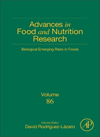August, 2018 news
August 30th, 2018
Via publiDB
ESVV-EPIZONE 2018, 11. International Congress for Veterinary Virology 12. Annual Meeting of EPIZONE
Communications in this event:
- Viral infections of Swine 1.Oral session 4
- African swine fever: The biggest threat for the European swine industry - what can we do?
August 27th, 2018
Via publiDB
Epidemiological and molecular surveillance of Mycobacterium tuberculosis Complex in wild ungulates from southern Spain, 2011-2018
Poster communication in 13th Conference European Wildlife Disease Association. Wildlife Health and Conservation: Expectations in a challenging era
August 24th, 2018
Via publiDB
Genetic heterogeneity of dolphin morbilliviruses detected in the Spanish Mediterranean in inter-epizootic period
Investigation article published in BMC Veterinary Research
BACKGROUND:
In the last 20 years, Cetacean Morbillivirus (CeMV) has been responsible for many die-offs in marine mammals worldwide, as clearly exemplified by the three dolphin morbillivirus (DMV) epizootics of 1990-1992, 2006-2008 and 2011 that affected Mediterranean striped dolphins (Stenella coeruleoalba). Systemic infection caused by DMV in the Mediterranean has been reported only during these outbreaks.
RESULTS:
We report the infection of five striped dolphins (Stenella coeruleoalba) stranded on the Spanish Mediterranean coast of Valencia after the last DMV outbreak that ended in 2011…
Read more
August 13rd, 2018
Via publiDB

Development and Evaluation of a Serological Assay for the Diagnosis of Tuberculosis in Alpacas and Llamas
Investigation article published in Frontiers in veterinary science
South American camelids are susceptible to tuberculosis, caused mainly by Mycobacterium bovis and M. microti. Despite the tuberculin skin test being the official test for tuberculosis, it has a very low sensitivity in these species (14–20%). Serological tests present the advantages of being rapid, easy to perform and facilitate analysis of large numbers of samples in a short period of time. Novel antigen discovery and evaluation would provide enhanced detection of specific antibodies against members of M. tuberculosis complex. Here, we describe the development and evaluation of an ELISA-type…
Read more
August 12nd, 2018
Via publiDB

Máster Universitario en Sanidad y Producción Porcina. 2018 edition
Communications in this event:
- VacunaciĂłn en jabalĂ: aproximaciĂłn para el control de PPA
- Animales de vida libre como reservorio de enfermedades
- LegislaciĂłn sobre sanidad animal
- EpidemiologĂa: teorĂa y práctica II
- InmunologĂa: vacunas de nueva generaciĂłn
- EpidemiologĂa: teorĂa y práctica I
- Visita al Centro de Vigilancia Sanitaria Veterinaria (VISAVET)
- InmunologĂa. Inmunidad adaptativa I
- InmunologĂa. IntroducciĂłn. Inmunidad natural
- InmunologĂa: Vacunas convencionales
August 8th, 2018
Via publiDB
Genes resistentes a los antibiĂłticos
Interview in Planeta Vivo Radio of Planeta Vivo Radio
La resistencia a los antibiĂłticos en más de 400 genes será el tema central del programa tras la publicaciĂłn de un trabajo en Nature que desvela el gran problema que afrontamos. Entrevistaremos para ello a uno de los autores de dicho trabajo, Bruno González Zorn, investigador de la Facultad de Veterinaria y del Centro de Vigilancia Sanitaria Veterinaria (VISAVET) de la Universidad Complutense de Madrid. PLANETA VIVO RADIO es el programa radiofĂłnico sobre divulgaciĂłn cientĂfica y tĂ©cnica de Canarias más longevo con más de 9 años de emisiĂłn semanal. Es una apuesta del Instituto Volca…
Read more
August 3rd, 2018
Servicio de Informática y Comunicación
PROMANBOV, a new operative group for the promotion of prudent use of antimicrobials in cattle
The project is led by ASOPROVAC, Agropienso and the PORCSA-Grup de Sanejament Porcí de Lleida and has the collaboration of Novadays, UPM, VISAVET-UCM and AEMPS.
This group aims to improve the situation of bacterial resistance in animal health.…
Read more
Related news in other media:
- Nace un grupo operativo para el uso prudente de antimicrobianos - C de ComunicaciĂłn
- Constituido el grupo operativo PromanBov para mejorar el uso de antibiĂłticos en granjas de vacuno de carne - eurocarne.com
- Grupo para impulsar el uso prudente de antibiĂłticos en vacuno de carne - revistaalimentaria.es
- Nace PROMANOV, nuevo grupo operativo para la promociĂłn del uso prudente de antimicrobianos en vacuno de carne - agronewscastillayleon.com
August 3rd, 2018
Via publiDB
Abundance and diversity of the faecal resistome in slaughter pigs and broilers in nine European countries
Investigation published in Nature microbiology
EFFORT Group
Haitske Graveland2 , Alieda van Essen4, Bruno Gonzalez-Zorn8, Gabriel Moyano8, Pascal Sanders9, Claire Chauvin9, Julie David9, Antonio Battisti10, Andrea Caprioli10, Jeroen Dewulf11, Thomas Blaha12, Katharina Wadepohl12, Maximiliane Brandt12, Dariusz Wasyl13, Magdalena Skarzyńska13, Magdalena Zajac13, Hristo Daskalov14, Helmut W. Saatkamp4 and Katharina D. C. Stärk15
Antimicrobial resistance (AMR) in bacteria and associated human morbidity and mortality is increasing. The use of antimicrobials in livestock selects for AMR that can subsequently be transferred to humans. Thi…
Read more
August 3rd, 2018
Via publiDB

Antimicrobial Resistance in the Food Chain in the European Union
The book Biological Emerging Risks in Foods edited by Academic Press includes this chapter
Consumers require safety foods but without losing enough supply and low prices. Food concerns about antimicrobial residues and antimicrobial-resistant (AMR) bacteria are not usually appropriately separated and could be perceived as the same problem. The monitoring of residues of antimicrobials in animal food is well established at different levels (farm, slaughterhouse, and industry), and it is preceded by the legislation of veterinary medicines where maximum residues limits are required for medicines to be used in food animal. Following the strategy of the World Health Organization, one of th…
Read more
August 2nd, 2018
Via publiDB
Resistencia a AntibiĂłticos: tiempo de actuar
Conference in Cursos de La Granda. TecnologĂa microbiana, salud y calidad de vida. Un homenaje al profesor Julio R. Villanueva (1928-2017)
Related news in other media:
- Las bacterias van ganando la batalla a los antibiĂłticos - lne.es
August 1st, 2018
Via publiDB

Exploring the oxidative, antimicrobial and genomic properties of Campylobacter jejuni strains isolated from poultry
Investigation article published in Research in Veterinary Science
Campylobacter jejuni is the leading cause of food-borne bacterial enteritis in humans, with contaminated poultry products considered the main source of infection. To survive the food chain, C. jejuni utilizes multiple defense mechanisms that counter oxidative and aerobic stresses. In this study, we phenotypically characterised 63 C. jejuni strains with oxidative stress survival and antimicrobial susceptibility testing to investigate correlations between these two phenotypes against the source of the strains and the presence of the MarR regulators RrpA and RrpB which have a role in regulating t…
Read more
August 1st, 2018
Via publiDB

Evaluation of the use of a needle-free injection syringe as a cause of non-specific reactions in the intradermal tuberculin test used for the diagnosis of bovine tuberculosis
Investigation article published in Research in Veterinary Science
The objective of the study was to elucidate whether the use of the needle-free Dermojet syringe, which is based on a high pressure inoculation and is used to inject tuberculin in cattle in several countries, may, in itself, cause skin reactions that can be interpreted as positive reactions to the intradermal tests that are not, in fact, related to the real infection status of the animals.
Forty-four cattle from an officially tuberculosis-free (OTF) herd were selected, and four single intradermal tuberculin (SIT) tests were performed on each animal, two on each side of the neck. Three differen…
Read more
August 1st, 2018
Via publiDB
Temporal analysis of the interference caused by paratuberculosis vaccination on the tuberculosis diagnostic tests in goats
Investigation article published in Preventive Veterinary Medicine
Vaccination against paratuberculosis (PTB) in goats is a cost-effective control strategy, and is also effective as regards preventing the onset of clinical cases. However, it causes interference in the diagnostic tests used in the control of tuberculosis (TB). A group of 99 goats from a herd with no history of TB or PTB infection was vaccinated against PTB at seven months of age. They then underwent consecutive intradermal tests [single (SIT) and comparative (CIT) intradermal tuberculin tests), interferon-gamma release assays (IGRA) and two serological tests (p22_CE and DR-ELISA) every three m…
Read more
August 1st, 2018
Via publiDB
Genetic dissection of the BRCA2 promoter and transcriptional impact of DNA variants
Breast cancer research and treatment publish this investigation article
Purpose
Promoter mutations may affect transcription and can be associated with human diseases. However, the promoters of the breast cancer (BC) genes are not regularly screened. Our goal was to investigate the BRCA2 promoter in order to study a possible correlation between impaired transcription and disease.
Methods
The proximal and core promoter of the BRCA2 gene was sequenced in 95 high-risk BC patients. A BRCA2-promoter insert [− 938 to + 312 from the transcription start site (TSS)] was generated and cloned into the firefly luciferase vector pGL4.10. Promoter variants and del…
Read more
August 1st, 2018
Via publiDB
Epidemiological situation of the exposure to agents causing Equine Piroplasmosis in Spanish Purebred Horses in Spain: seroprevalence and associated risk factors
Investigation published in Journal of Equine Veterinary Science
Equine piroplasmosis (EP) is a tick-borne disease caused by Babesia caballi (B. caballi) and Theileria equi (T. equi) which causes severe economic losses to the equine industry, represented by the Spanish Purebred (SP) horse in Spain. The seroprevalence of EP is known in certain regions of Spain but up to date there are no data in SP horses. The aim of this study was to determine the seroprevalence of EP in the SP breeding horse population in central Spain and to evaluate risk factors associated with the occurrence of the infection. A total of 536 horse serum samples were tested for antibodies…
Read more


